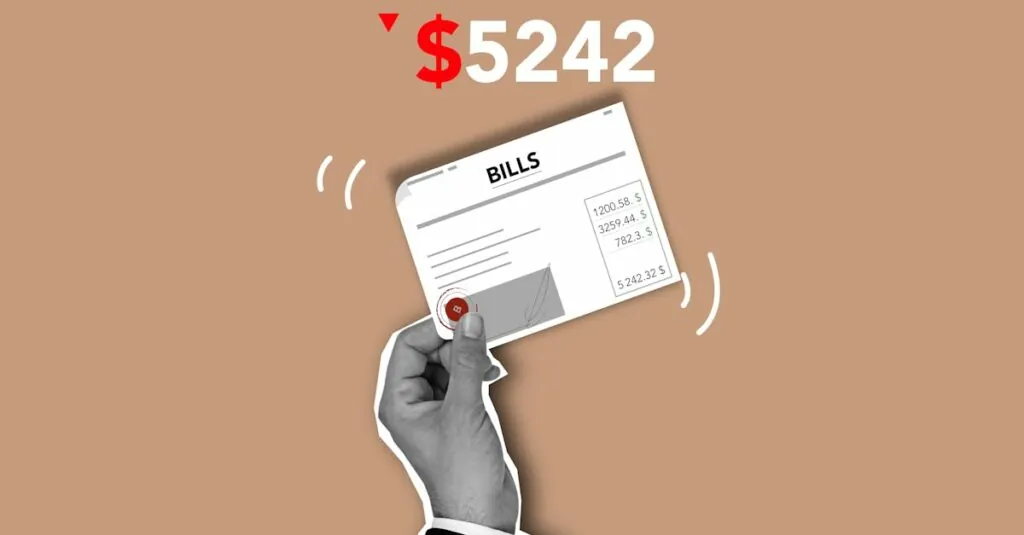Table of Contents
ToggleIn today’s digital jungle, Software as a Service (SaaS) is the king of the jungle, swinging from branch to branch with ease. But wait—before companies get lost in the wild world of subscriptions, they need a trusty guide. Enter SaaS spend management, the unsung hero that helps organizations tame their software expenses and avoid the dreaded budgetary black hole.
Overview of SaaS Spend Management
SaaS spend management plays a critical role in optimizing software expenses for companies. This approach enables organizations to monitor, control, and analyze their SaaS subscriptions effectively.
Definition and Importance
SaaS spend management refers to the process of overseeing and optimizing expenditures related to Software as a Service applications. It allows organizations to maintain visibility over software usage, ensuring they only pay for necessary subscriptions. By managing SaaS spending, companies can prevent overspending and eliminate underutilized applications, leading to substantial cost savings. Understanding this process helps organizations make informed decisions, streamline budgeting, and align software investments with business goals.
Key Components
Essential components of SaaS spend management include tracking, analyzing, and optimizing software subscriptions. Tracking usage provides insights into how often applications are accessed, informing companies of their value. Analyzing spending patterns reveals areas for potential savings, ensuring that resources are allocated effectively. Optimizing vendor relationships aids in negotiating better contract terms and reducing costs. Adoption of automated tools simplifies these tasks, offering real-time data and analytics that enhance decision-making processes. Collectively, these components contribute to efficient management of SaaS expenses.
Benefits of SaaS Spend Management
SaaS spend management offers several advantages that enhance organizational efficiency. Companies enjoy significant benefits, from cost savings to enhanced visibility.
Cost Savings
Cost savings rank among the most substantial advantages of effective SaaS spend management. By tracking usage, organizations identify unnecessary subscriptions and eliminate wasteful spending. Implementing these strategies can reduce SaaS expenses by up to 30% or more. Companies prioritize negotiations with vendors, leveraging data to secure better pricing. Identifying underutilized software leads to informed decisions, ultimately contributing to higher profitability.
Enhanced Visibility
Enhanced visibility into software usage emerges as another key benefit. Companies gain insights into who accesses applications, how often they use them, and their overall effectiveness. This clarity facilitates informed decision-making and strategic planning. Organizations can monitor spending patterns in real-time, allowing for quick adjustments if discrepancies arise. Effective management tools provide dashboards that centralize information, making it easy to track multiple subscriptions. Businesses prioritize transparency, ensuring that all stakeholders understand software investments.
Challenges in SaaS Spend Management
SaaS spend management presents unique challenges that organizations face in controlling costs and optimizing software usage. Key difficulties include subscription overlap and lack of centralization.
Subscription Overlap
Subscription overlap occurs when multiple departments use similar or identical SaaS applications, leading to wasted expenses. It’s crucial for organizations to regularly audit their subscriptions to identify redundancies. By consolidating overlapping tools, companies can streamline their software stack, potentially reducing costs by 15% or more. Awareness of application usage across departments can enhance communication and foster better decisions regarding which subscriptions to maintain. Utilizing spend management tools that provide visibility into all software subscriptions aids in pinpointing these overlaps effectively.
Lack of Centralization
A lack of centralization complicates SaaS expense management, as departments often operate independently. This decentralized approach can result in fragmented visibility over total software costs. Organizations find it difficult to get an accurate picture of all expenses when different teams acquire their own subscriptions. Implementing a centralized management platform allows teams to track all SaaS spends in one location, improving accountability and decision-making. Centralization also promotes collaboration between departments, ensuring alignment on software usage and reducing unnecessary expenses. By prioritizing centralization, companies position themselves to make informed purchasing decisions and maximize their SaaS investments.
Best Practices for Effective SaaS Spend Management
Implementing best practices ensures effective SaaS spend management. Regular reviews and audits play a crucial role in optimizing software investments.
Regular Audits and Reviews
Conducting regular audits identifies unnecessary subscriptions and prevents overspending. Audits help pinpoint overlapping applications used by different departments, which can reduce costs by 15% or more. By reviewing usage patterns, organizations gain insights into actual software needs. Frequent evaluations provide clarity on which services deliver value and which do not. Additionally, involving stakeholders during reviews encourages accountability and fosters collaboration. Establishing a schedule for these audits ensures consistency in tracking SaaS expenses.
Utilizing SaaS Management Tools
Leveraging SaaS management tools streamlines tracking and monitoring of software usage. These platforms centralize data from multiple applications, providing a comprehensive view of spending. Real-time analytics enable organizations to make informed decisions quickly. Visibility into user access and application frequency fosters better resource allocation. Various tools also offer reporting features, assisting in identifying trends and patterns over time. Prioritizing the right management solutions simplifies the oversight of SaaS subscriptions, ensuring optimal investments and minimizing waste.
Future Trends in SaaS Spend Management
SaaS spend management faces exciting changes, particularly in technology and integration capabilities.
AI and Automation
AI continues to transform SaaS spend management by enhancing decision-making processes. Predictive analytics enables organizations to foresee spending trends, allowing them to allocate resources more efficiently. Automation streamlines routine tasks such as subscription tracking and invoice processing, cutting down on manual errors. With AI-driven insights, companies gain a clearer understanding of usage patterns, leading to better negotiations with vendors. Consequently, organizations can achieve significant cost reductions, often by 20% or more through optimized software utilization.
Integration with Other Financial Tools
Integration with financial tools becomes crucial for comprehensive spend management. Centralized financial platforms provide holistic visibility into overall expenses. When SaaS spend management tools align with budgeting and accounting systems, real-time data becomes accessible, facilitating informed financial planning. Seamless connections between platforms enhance collaboration among departments and eliminate data silos. By synchronizing spending data with existing financial software, organizations can achieve greater financial accuracy and more strategic decision-making. Increased transparency into software expenses further supports effective resource allocation, ensuring a well-rounded approach to expense management.
SaaS spend management is not just a trend but a necessity for organizations looking to optimize their software investments. By embracing effective management strategies and tools, companies can significantly reduce costs while enhancing visibility into their software usage. Regular audits and centralized platforms foster accountability and informed decision-making.
As the landscape evolves with AI and automation, the potential for smarter spending becomes even greater. Organizations that prioritize SaaS spend management will position themselves to navigate challenges effectively and leverage opportunities for growth. The future of software management lies in strategic oversight and proactive engagement, ensuring that every dollar spent contributes to overall success.







